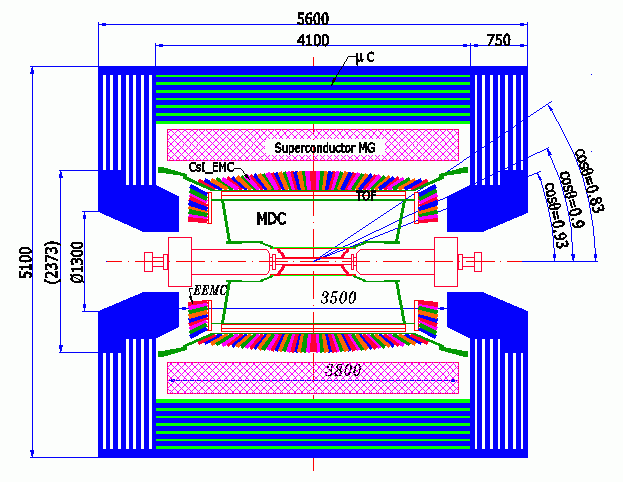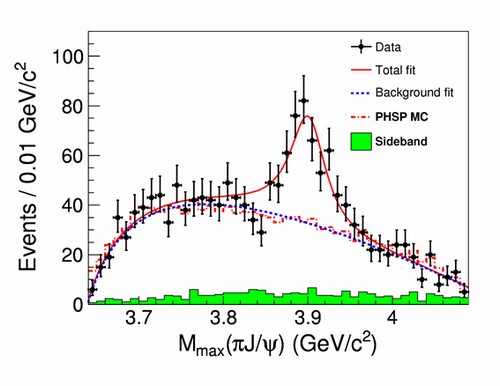BESIII introduction Edit Page
Design and construction

The BEPCII and BESIII project, which are the upgrade of BEPC/BESII, started in 2003. The new double-ring multi-bunch collider BEPCII is installed in the same tunnel as the previous BEPC. The peak luminosity is designed as $1\times 10^{33} cm^{-2}s^{-1}$, which is optimized at a center-of-mass energy of $2\times1.89 GeV$ and about one hundred times increase compared with its predecessor. The completely new detector BESIII consists of a Main Drift Chamber(MDC), Time-Of-Flight system(TOF), ElectroMagnetic Calorimeter(EMC), and MUon Chamber system(MUC). Details about BEPCII/BESIII could be found in ref.[1]
Physics
The energy region 2-4.6 GeV offers BESIII unique opportunities of undertanding the perturbative and non-perturbative behaviours of QCD, tau-physics, precision measurements of CKM parameters, CP violation, rare decays and new physics studies. Since the first physics data taking in March 2009, many important results has been made, which including but not limited as:
- observed many XYZ states, such as $Z_{c}(3900)^+$
- studied the transitions between XYZ states, such as Y(4260)->gamma X(3872)
- measurements of the lowest lying charmed baryon $\Lambda_{c}^+$ at the threshold
- first observation of $a_{0}(980) - f_{0}(980)$ mixing.


Useful Links
- BESIII home page: http://bes3.ihep.ac.cn/
- BESIII yellow book: http://bes.ihep.ac.cn/bes3/phy_book/index.html
Reference
[1]https://arxiv.org/abs/0911.4960